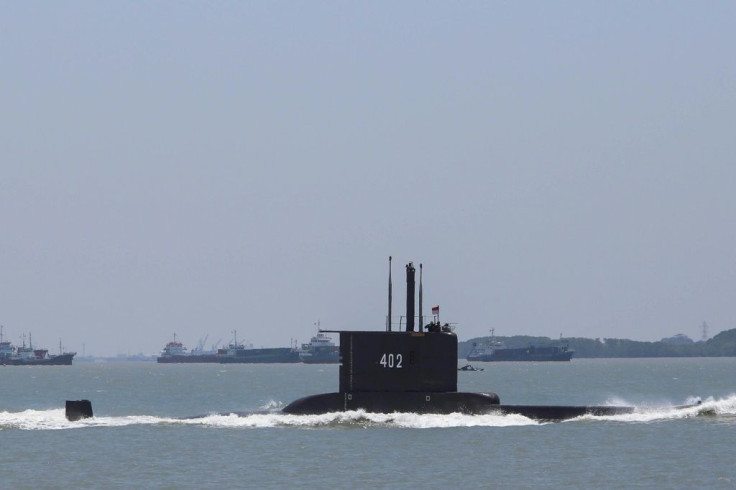Indonesia Submarine Missing: Search Team Finds Oil Spill Near Dive Location
KEY POINTS
- The submarine was taking part in a training exercise when it went missing
- Australia, Singapore and India have responded to requests for assistance
- The submarine can dive up to 250-500 meters below sea level
Aerial search teams looking for an Indonesia navy submarine found an oil patch near the estimated diving location of the vessel Thursday. The vessel, with 53 people on board, went missing Wednesday north of the island of Bali.
The search for the submarine and its crew continued Thursday as concerns were raised about the chances of a possible maritime disaster, Reuters reported. Neighboring countries, including Australia, Singapore and India, have responded to requests for assistance.
Indonesian military chief Hadi Tjahjanto said the KRI Nanggala 402 was participating in a training exercise when it missed a scheduled reporting call around 3 a.m. Wednesday morning (4 p.m. ET, Tuesday). A distress signal was sent by the Indonesian authorities to the International Submarine Escape and Rescue Liaison Office (ISMERLO) on Wednesday afternoon. The Singapore Navy and the Australian Navy responded to it, Al Jazeera reported, quoting an Indonesian Navy report.
"It is possible that during static diving, a blackout occurred so control was lost and emergency procedures cannot be carried out and the ship falls to a depth of 600-700 meters," said First Admiral Julius Widjojono, a spokesman for the Indonesian Navy.
He said the submarine can dive up to 250-500 meters (820-1640 ft) below sea level. "Anything more than that can be pretty fatal, dangerous," he added. Authorities estimate it went 100-200 meters below that depth.
Widjojono said authorities are hoping that the crew is safe. "Let's pray for them so they can survive," he said.
After the oil spill was found, two Navy vessels with sonar capability had been deployed to assist in the search operation. The oil slick could point to a possible damage to the vessel or could be a signal from the crew.
The submarine was carrying 49 crew members, a commander and three gunners.
Singapore's Defense Minister Ng Eng Hen has tweeted that its vessel – MV Swift Rescue – had been dispatched "as fast as she could get ready" along with a medical team for rescue operations.
RSN’s MV Swift Rescue – our submarine rescue vessel – was dispatched expeditiously yesterday afternoon, as fast as she could get ready, after our Navy Chief received a request for assistance from his @_TNIAL_ counterpart. A medical team was also added… https://t.co/SD2jhjROMH pic.twitter.com/sXPSnfvDai
— Ng Eng Hen (@Ng_Eng_Hen) April 22, 2021
Collin Koh, a research fellow at the S Rajaratnam School of International Studies in Singapore, told Al Jazeera that Singapore is equipped to conduct such complex rescue operations. "Singapore has a specially built submarine rescue ship along with a Deep-Submergence Rescue Vessel (DSVR) to perform complex rescue operations. Indonesia has no such equivalent capability," said Koh, who specializes in naval affairs and maritime security.
"The extent to which it can help will very much depend on first pinpointing the boat's exact location, the prevailing weather conditions, the sea conditions and most importantly establishing the crew's status," he added.
The submarine, which weighs 1,395-tonne, joined the Indonesian fleet in 1981. Built in Germany in 1977, the submarine underwent a two-year refit in South Korea in 2012.
The archipelagic nation operates 12 submarines but has been seeking to modernize its defense capabilities as some of its equipment are old.

© Copyright IBTimes 2025. All rights reserved.





















